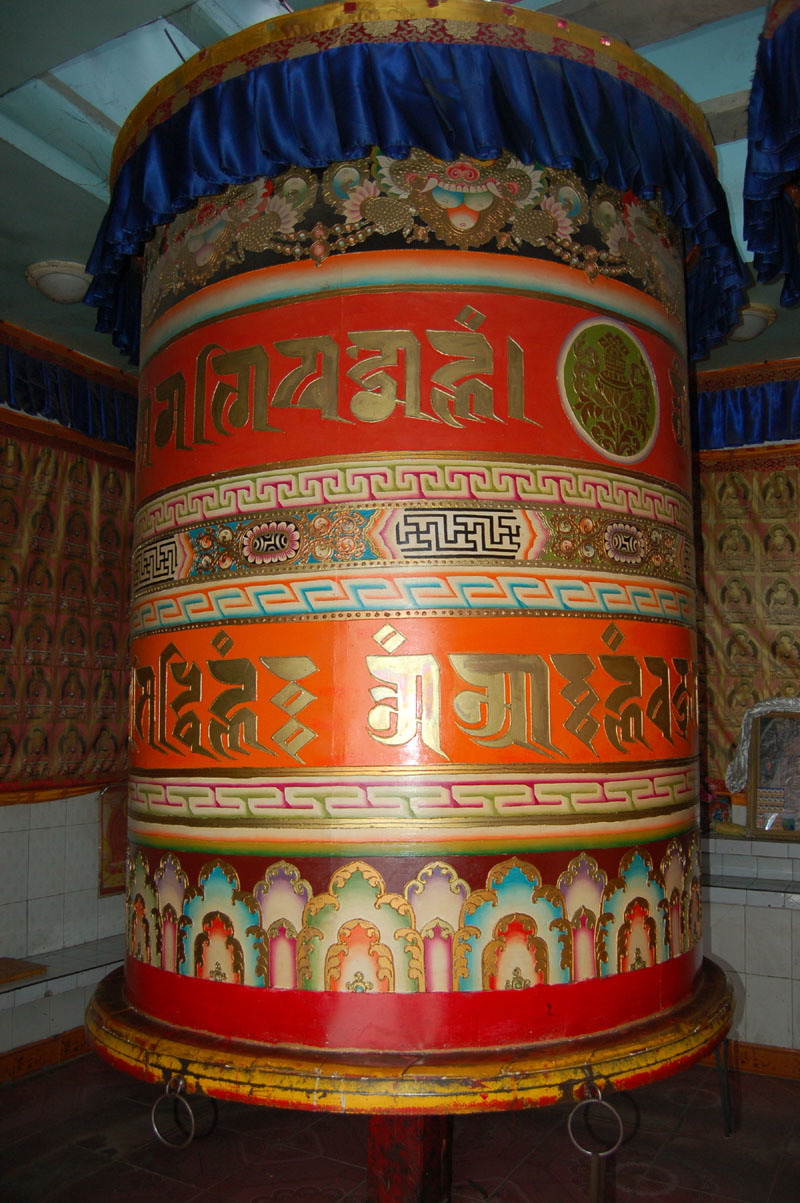Prayer wheels are also called “Mani” scripture wheels, which are related to the Six-Syllable Prayer (Om Mani Pad-me Hum). In Tibetan Buddhism, it is believed that the more you chant the Six-Syllable Prayer, the more respect you show to Buddha and the more chances you will be relieved from the six divisions of rebirth.
Besides of chanting the prayer, “Mani” prayer wheels with Six-Syllable Prayer scriptures inside are also made for pilgrims to hold by hand and turn. Tibetans believe that one turn equals to chanting scriptures once, and repeated turns symbolize chanting of the Prayer for thousands of times.
Today, some prayer wheels are even driven by water, power to relieve the labor of human being.
The prayer wheel is divided into two kinds: one is for holding by hands, the other is fixed on stands inside monasteries.
Once you step onto the land of Tibet, you will see Tibetan pilgrims in colorful ethnic costumes holding prayer wheels of all types in their hands in Tibetan Buddhist monasteries. Some taller ones hold bigger prayer wheels with long handles stored inside the ox skin covers fixed on their waist belts. With the other end of the long handles stayed inside the covers, the prayer wheels can be turned clockwise easily with their right hands. This kind of prayer wheel is usually made of wood. Another smaller kind specially made for the elderly is made of bone or metal with more exquisite craft. Some kind of prayer wheel is covered by a piece of cloth. It is ususally more precious, mostly inlaid with gems.

